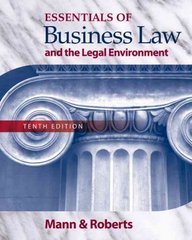
Question 2 (of 5): twelve parts Both the U.S. and Mexico only need labor to produce computers and beer. Suppose that workers in the U.S. need 5 hours to assemble a computer and 2 hours to produce one case of beer, while workers in Mexico need 10 hours to assemble a computer and 1 hour to produce one case of beer. The U.S. has 10 million labor hours available to use in production each month. Mexico also has 10 million labor hours available for production per month. For simplicity, assume that opportunity costs are constant for both countries. iv. Plot the Production Possibilities Frontier (PPF) of the U.S. and Mexico for computers and beers. Place computers in the horizontal axis for both countries. Make sure you mark clearly the x-intercept and y-intercept for each PPF in your graphs. Be consistent using units of account. What is the opportunity cost of producing one computer for the U.S.? And for Mexico? What is the opportunity cost of producing one case of beer for the U.S.? And for Mexico? Suppose both the US and Mexico allocate half their available hours of work to the production of computers and half to the production of beer. If both countries are self-sufficient (i.e. there is no trade), how many computers and cases of beer will the US be able to consume? How many computers and cases of beer will Mexico be able to consume? Make your calculations explicit and mark this point clearly in each country's PPF. Explain briefly in words. Which country has the absolute advantage in producing computers? Which country has the absolute advantage in producing beers? Explain your answer in words and with numbers. Which country has the comparative advantage in producing computers? Which country has the comparative advantage in producing beers? What product(s) should the US specialize in? What product(s) should Mexico specialize in? Explain your answer in words and with numbers. Now suppose that Mexico comes up with a better technology for producing computers, so that if Mexico allocates all its labor hours to computers, it can now produce 5 million computers. Will this have an impact on Mexico's PPF? If 50, show us graphically and explain briefly. Make vi. vii. viii. ix. sure to mark clearly what the x-intercept and y-intercept of the PPF are. Will this new technology affect Mexico's comparative advantage? Will it affect the U.S. comparative advantage? Explain in words and with numbers. After the event in (v), Mexico still allocates half its available hours of work to assemble computers, and the other half to produce cases of beer. How many computers and cases of beer will Mexico consume now? How does this combination of computers and beer compare to the combination in part (ii)? Show graphically and explain briefly. In the U.S. a particularly large cohort of graduates joins the labor market and becomes available for work. This event increases the quantity of hours available for production in the U.S. from 10 million to 12 million. Will this have an impact on the U.S. PPF? If 50, show us graphically and explain briefly. Make sure you mark clearly the x-intercept and y-intercept. Does this event affect the U.S. comparative advantage? Does it affect Mexico's comparative advantage? Assume Mexico is applying the new technology of part (v). Explain in words and with numbers. After the event in part (vii), the U.S. still allocates half its available hours of work to assemble computers, and the other half to produce cases of beer. How many computers and cases of beer will the U.S. consume now? How does this combination of computers and beer compare to the combination in part (ii)? Show graphically and explain briefly. After all previous events and considering their most recent labor allocation, Mexico and the US decide to give up self-sufficiency and sign a free-trade treaty that allows them to buy from and sell to each other. Suppose, specifically, that the U.S. now exports 2 million cases of beer to Mexico, and imports 0.9 million computers from Mexico. How many computers and cases of beer does the U.S. consume after trade? How many computers and cases of beer does Mexico consume after trade? Plot these new consumption combinations in relation to each country's PPF. How do they compare to the combinations in parts (vi) for Mexico and (viii) for the U.S.? X. xi. xii. What price is the U.S. paying for one Mexican computer? Is this price advantageous for the U.S.? Why? Is this price advantageous for Mexico? Why? Explain briefly and make your calculations explicit. What price is Mexico paying for each case of beer it buys from the U.S.? Is this price advantageous for Mexico? Why? Is this price advantageous for the U.S.? Why? Explain briefly and make your calculations explicit. Would you say the U.S. has gained from opening to trade with Mexico? In which way? Has Mexico gained from opening to trade with the U.S.? In which way? In this exercise, does anybody or any group lose when trade between Mexico and the U.S. opens? Why? Explain briefly










